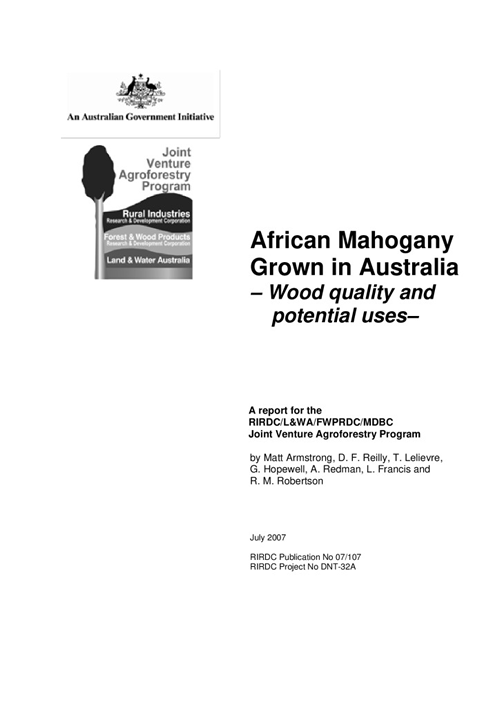The understanding of the wood quality and use potential of Kyaha senegalensis (African mahogany) gained during this study will provide potential investors, producers and processors with concise and accurate information for growing and producing high value timber, which will underpin a saw log industry in the dry tropics of northern Australia. The opportunity to grow high value saw logs in Australia’s north provides alternatives to landholders and indigenous communities with large tracts of arable land who want to grow trees for commercial timber products.
The study indicated that Australian-grown plantation K. senegalensis produces an aesthetically pleasing timber with marketable colour and figure attributes. The wood appears suitable for a number of high value applications including cabinetry, interior joinery, windows, doors, and contemporary and reproduction furniture. However, a number of issues may affect the profitability of converting plantation logs to high-value appearance grade timber, namely: wandering pith, the proportion of stem under heartwood at a young age, and the development of decay and stain. All the identified issues could potentially be addressed through breeding and appropriate silvicultural management.
Based on the findings of this study of processing, use and wood quality properties, Australian plantation grown K. senegalensis has proven to be a prime candidate species for the ‘dry’ northern tropics of Australia.





